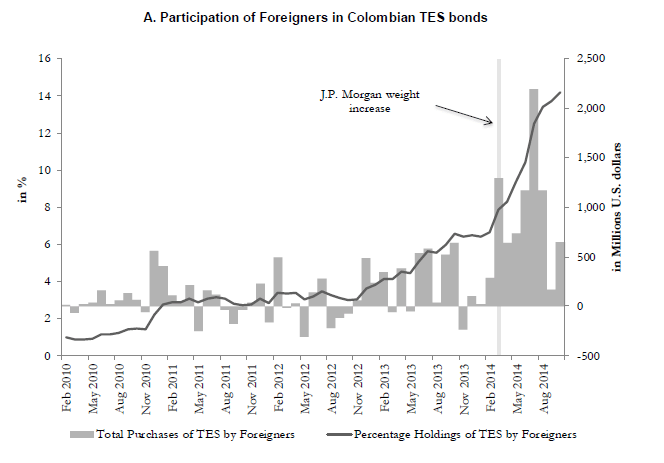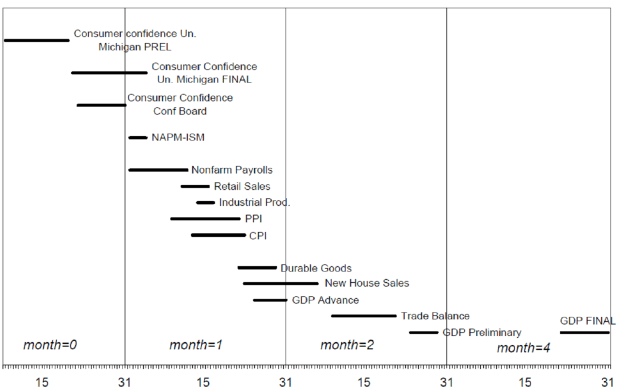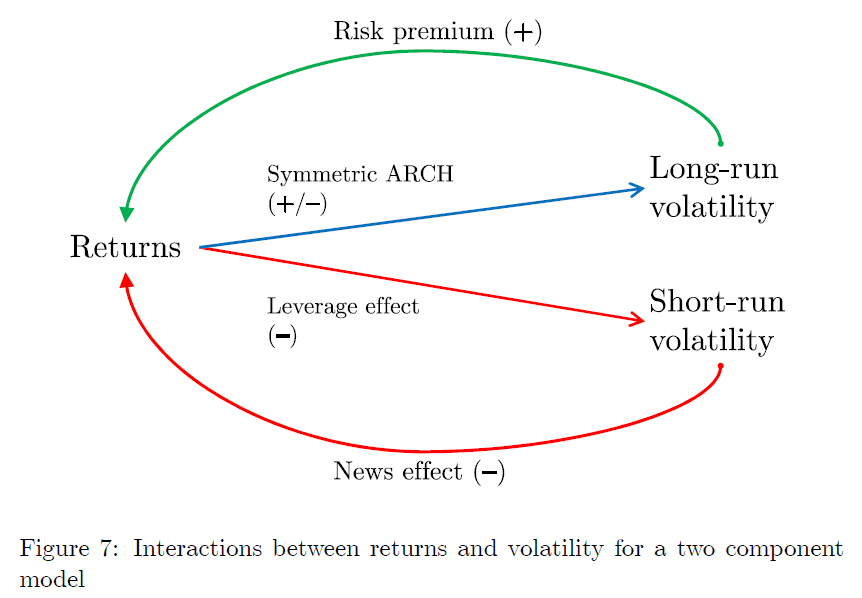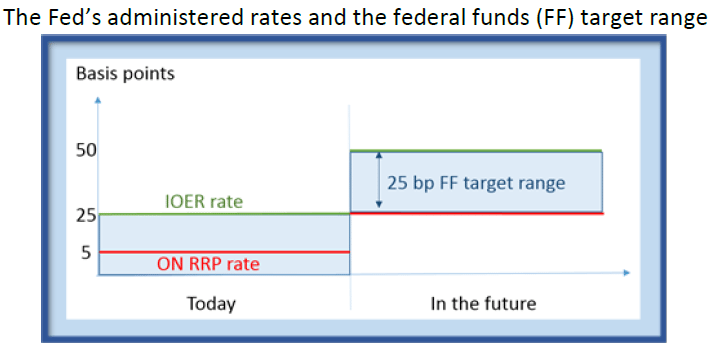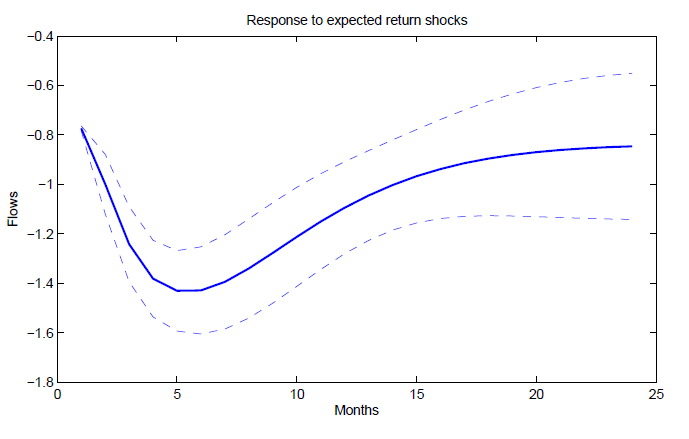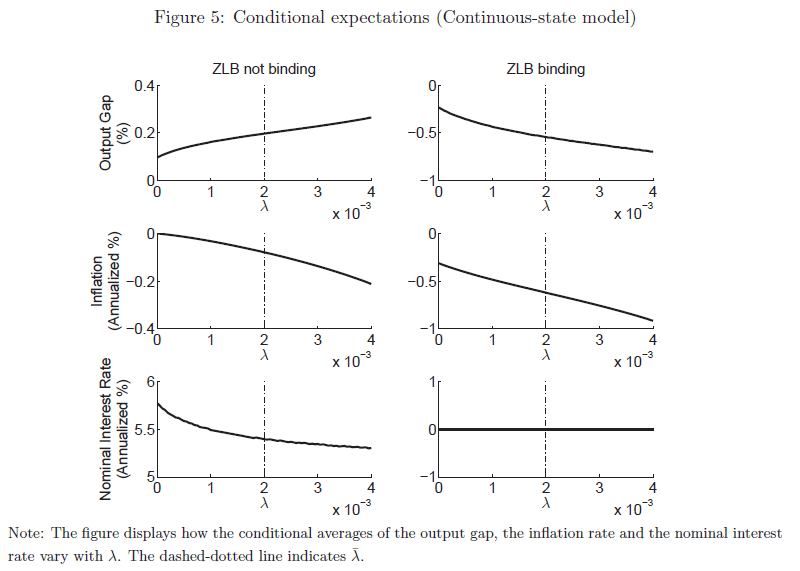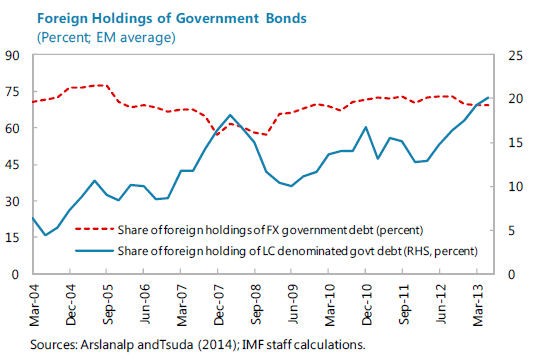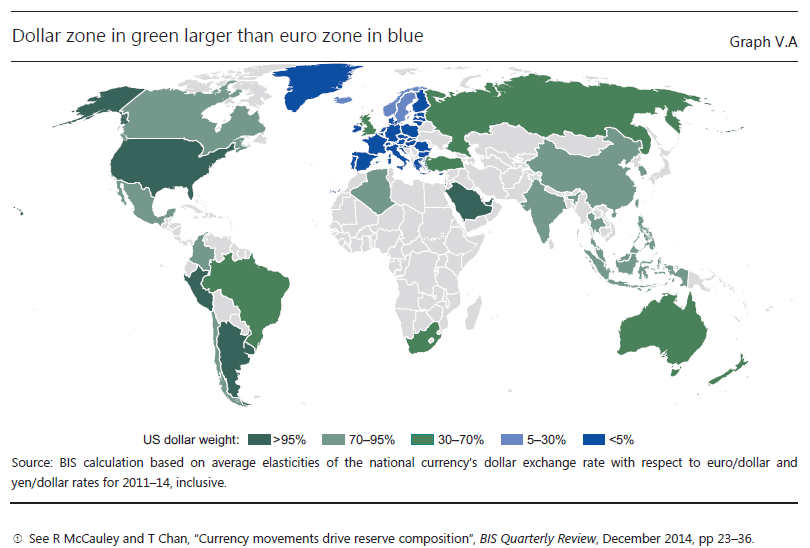An HKMIR paper explains benchmark index changes and shows their significant effects on mutual fund flows and international capital flows. Importantly, there is evidence for benchmark changes leading to an outperformance of upgraded assets, both at the time of announcement and the time of actual index adjustment.
When economic data surprises matter most
A Banca d’ Italia paper reminds us that the market impact of economic data surprises depends on the state of the economy and forecast diversity. In particular, the surprise impact tends to be greater, when predictions are tightly clustered around a ‘consensus’. Conversely, uncertainty seems to help preparing markets for shocks.
Modelling the relation between volatility and returns
There is evidence for a double relation between volatility and returns in equity markets. Longer-term fluctuations of volatility mostly reflect risk premiums and hence establish a positive relation to returns. Short-term swings in volatility often indicate news effects and shocks to leverage, causing to a negative volatility-return relation. Distinguishing the two is important for using volatility as a predictor of returns.
Understanding “liftoff”: how Fed policy tightening would actually work
A new “primer” explains how the Fed would tighten policy under current “superabundant liquidity”. Similar to the past, the focus would be on the fed funds rate, not the balance sheet. Unlike in the past, the fed funds target would be a range and pursued by setting in the interest rate on excess reserves (cap) and conducting reverse repo operations (floor).
Trend chasing and overreaction in equity and bond markets
Empirical analysis suggests that equity and bond returns in international markets are driven mostly by shocks to expected future real cash flows. Moreover, they interact with mutual fund flows. In particular, there is evidence of short-term “trend chasing” and overreaction. Bond market returns and flows are also jointly driven by U.S. interest rate shocks.
The deflationary bias of low interest rates
Compressed interest rates raise the risk of hitting the zero lower bound. A new theoretical ECB paper shows that even before the ZLB is reached this creates a deflationary bias, as inflation expectations shift lower, real rates rise, and consumption and pricing power decline. To counter this bias central banks would need to accept positive output gaps (tighter labour markets) or even increase their inflation targets.
On the vulnerability of local emerging debt markets
A new IMF paper provides evidence that increased foreign participation in local-currency emerging debt markets has made these significantly more vulnerable to foreign interest rate and risk shocks. Concentration of the investor base and poor economic fundamentals appear to amplify such vulnerability.
Setback risks for international USD lending
The BIS annual report emphasizes the dollar’s pervasive influence on international financial conditions. Post-crisis non-conventional Fed easing has spurred a global credit expansion, including economies that did not need it. Conversely, Fed tightening would reverse easy financing on a global scale, including countries that are ill prepared for it. FX depreciation is unlikely to insulate small and emerging economies from credit tightening.
China’s housing boom: numbers and risks
The surge in housing prices in metropolitan China is a systemic concern. A new paper estimates that price growth has been 8-13% per year from 2003 to 2013, comparable to the 1980s housing boom in Japan. Housing prices have averaged 8 times the annual income of buyers, implying a heavy financial burden. Sustainability relies on ongoing high household income growth and low real interest rates.
Rules of thumb for banking and currency crisis risk
A new ECB paper explores macroeconomic indicators for banking and currency crises over the past 40 years. Banking crises arose mostly in constellations of [i] low credit-deposit spreads and high short-term rates (over 11%) or [iii] high credit-deposit spreads (over 270 bps) and flat or inverted yield curves. Housing price growth has also been a warning signal. Currency crises ensued from exchange rate overvaluation (more 2.7% above trend) and high short-term interest rates (over 10%).

